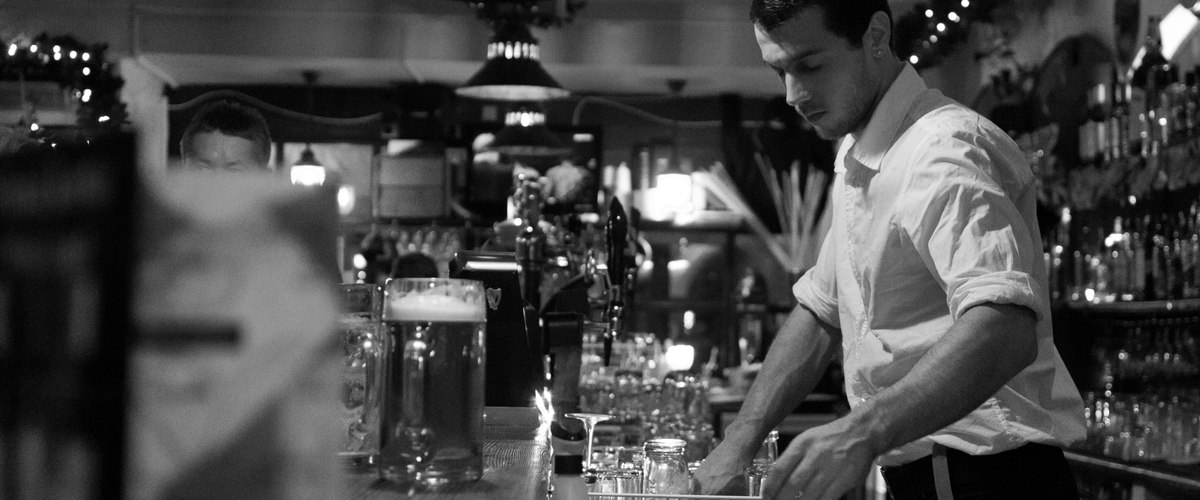Photo CC by Vratislav Darmek on Flickr
The Starving Artist: Full Time versus Part Time
A few weeks ago, a friend’s link to a rant about a rant about the Hype Machine, a music blog aggregator, got me thinking about the issue of whether it’s better to do art full time or part time. The short answer to that question, of course, has to do with what better means to you. But I still think there are meaningful distinctions that can be made between the kinds of art that get made in either situation.
The question of better can be addressed to a large extent using economic scenarios, though not by relying on classical economics. Basic economic theory would say that the more reward you get for your work, the more devoted you will be to it, hence ensuring value. Also, we would expect the best artists to receive the most money because their work is in the highest demand. So full-time artists, by this definition, should always be better artists.
Unfortunately, great art usually implies an audience learning curve. Beethoven’s early symphonies were panned by critics and audiences for being too long and complicated. Stravinsky’s Rite of Spring, booed and pelted with tomatoes at its première, is now the most performed “modern” orchestral work. Economics relies on people knowing what they want, but anyone who has ever been in a relationship with another human being knows this is a bad assumption to rely on. Great art is usually ignored, then vilified, then widely accepted, to paraphrase Schopenhauer.
Consequently, the motivations of artists tend to be more internal, or community-based, than directly economic. This is where the stereotype of the starving artist comes from: There are enough examples of great artists scraping by—or dying in poverty after achieving considerable fame—to make some people think this is how art should be made. How many times have you heard the argument that a given band’s independent, debut album was their best work? The starving artist model implies the superiority of part time, because the struggling artist must do something other than art in order to survive, until he or she makes it big … but at that point the artist is at risk of being corrupted by money, and hence sucky follow-up albums ensue.
Internet utopians like Clay Shirky and Chris Anderson also espouse the part-time theory. They believe that the internet should make it possible for anyone to plug into the niche market of their choice, because there are no barriers to publication online. But their arguments avoid the problem that not everything valuable is salable: A lot of the value of art is intangible, and as I have argued previously, intangible value is automatically assigned a value of zero, despite our best intentions. So I don’t think the internet is ever going to make it possible for all artists to go part time. Or at least, if we did all go part time, art would suffer.
The pro–full-time argument comes from the modernist camp, which created the idea of the academic artist, paid handsomely by the academy or the government to create great art that would eventually trickle down to the masses. The rationale is that expansive, complex, sophisticated art can only be made by people who devote their entire lives to doing it—specialization is a prerequisite to greatness, in other words, as it is for a surgeon or a lawyer. This argument led us to the extravagant works of the 1950s and 1960s by composers like Stockhausen (his Helicopter String Quartet is a good example). Yet while the modernists did create a lot of influential work and many masterpieces, they also produced their fair share of mediocrity.
Trying to determine whether part time or full time is more successful would make for an interesting study, if this were feasible. But what is clear is that regardless of how artists pay the bills, most art is bad, some is good, there are a few masterpieces, and the definition of masterpiece is constantly changing. So let’s look at the benefits and limitations of both approaches.
Nitsuh Abebe summarizes these fairly succinctly. Part-time artists are free to focus on whatever kind of work they think is valuable, they aren’t bound to the salability of their work (whether selling it to consumers or to an academic audience), they can pursue other interests, they have a perspective other than the myopic art world, and they lead more comfortable lives materially. The strengths of part time are also its downsides, however: Part-time artists often lack direction, they are less accountable, they are more likely to be self-indulgent, and they get distracted by the more quotidian aspects of life.
Full-time artists have the resources and time to create more expansive, engrossing work like operas or feature films; they are held responsible to a community of colleagues and their audiences; and they are generally more educated and have spent more time refining their craft. Conversely, they are less likely to think outside the box, they can be straightjacketed by the need to earn a living through their work, and they can become rigid in their aesthetic convictions.
There’s no intrinsically better way. Girl Talk and Charles Ives both had day jobs that supported their music, at least until they became more successful. Composers like Harry Partch and Edgar Varèse never did achieve financial success, although they were well respected and influential. On the other hand, we have Stockhausen, Xenakis, Schoenberg, Prince, and the Beatles, artists who were fairly well supported and yet still managed to continue one-upping themselves artistically.
People are very different. Successful artists have taken advantage of both the part-time and full-time paradigms to give us work that wouldn’t have been possible if it were done any other way. And as with any venture, most artists fail. But then again, anything worthwhile should be hard to do, otherwise it wouldn’t really be that worthwhile.



